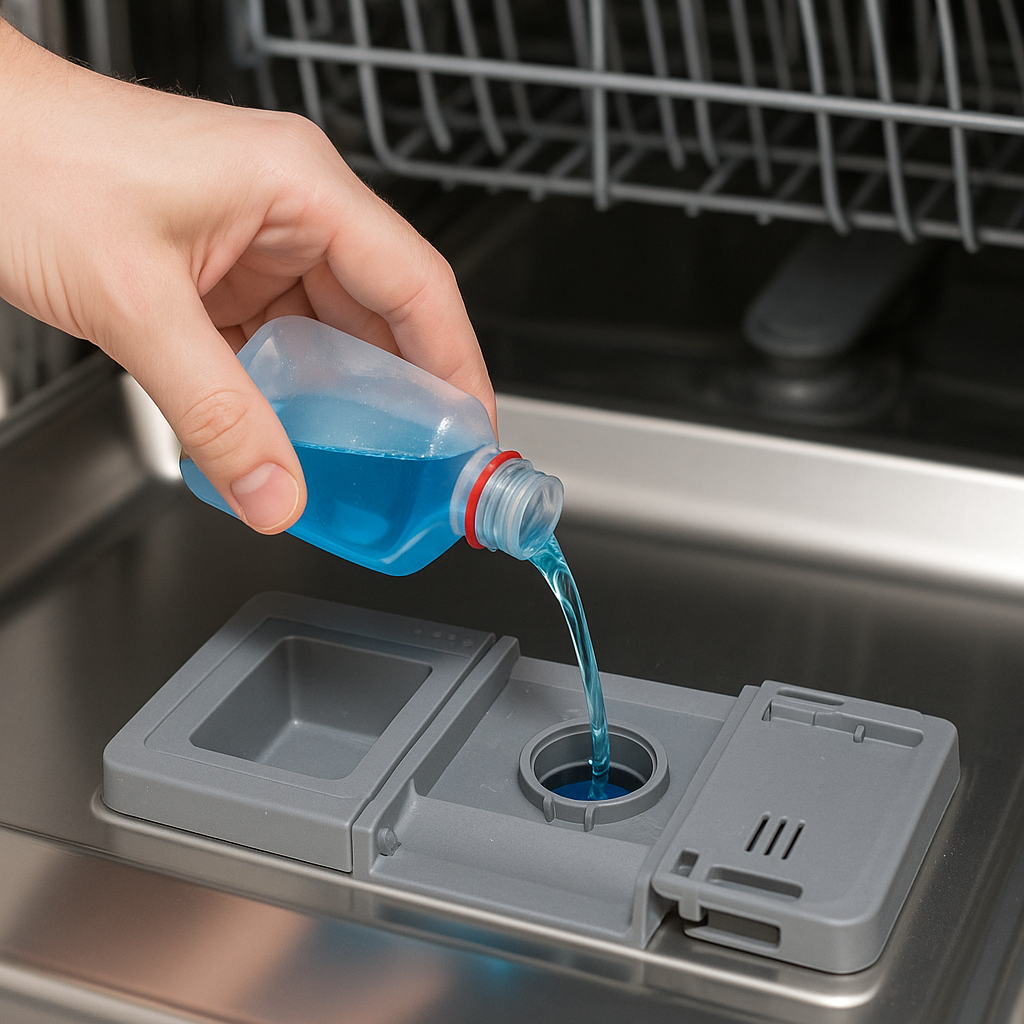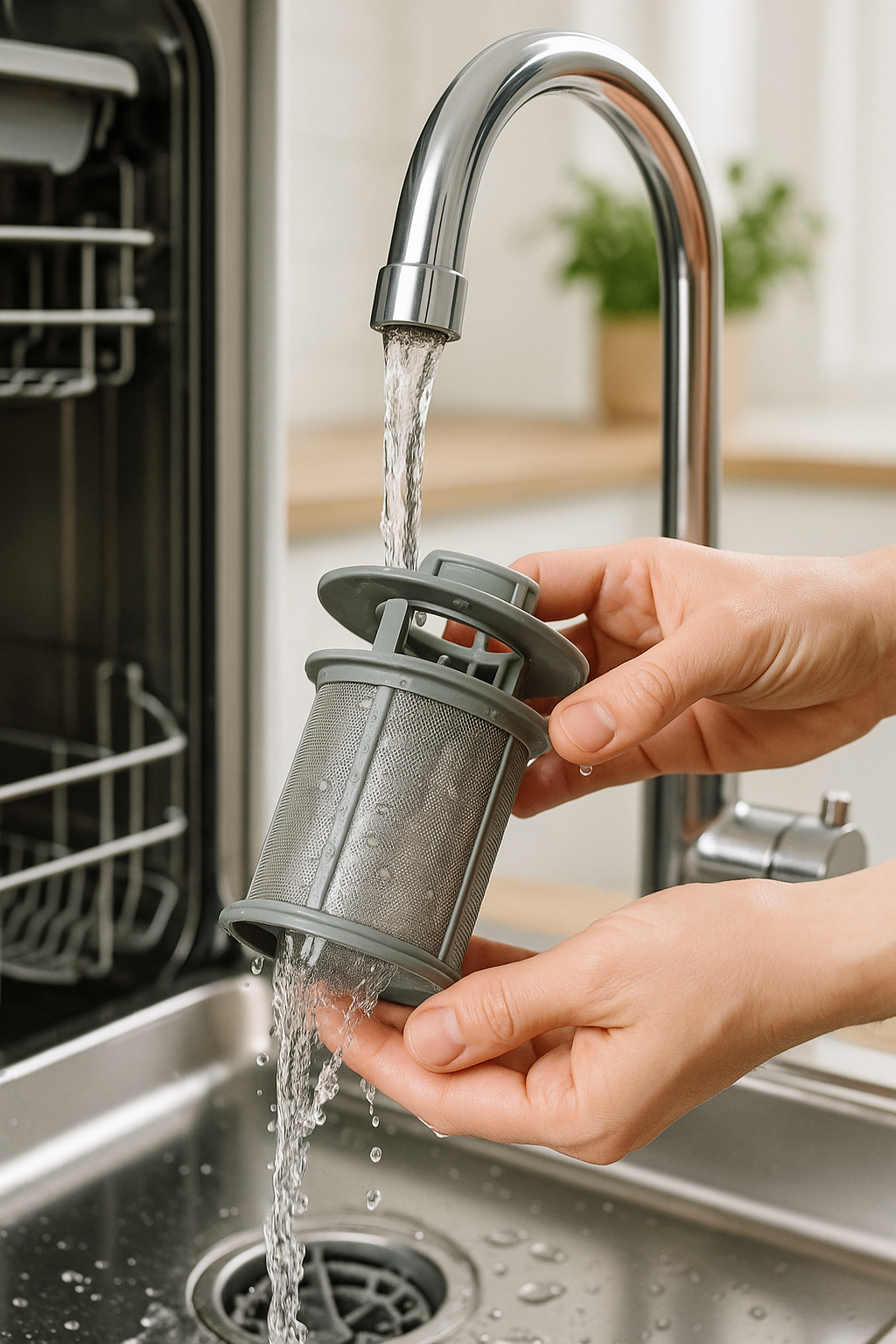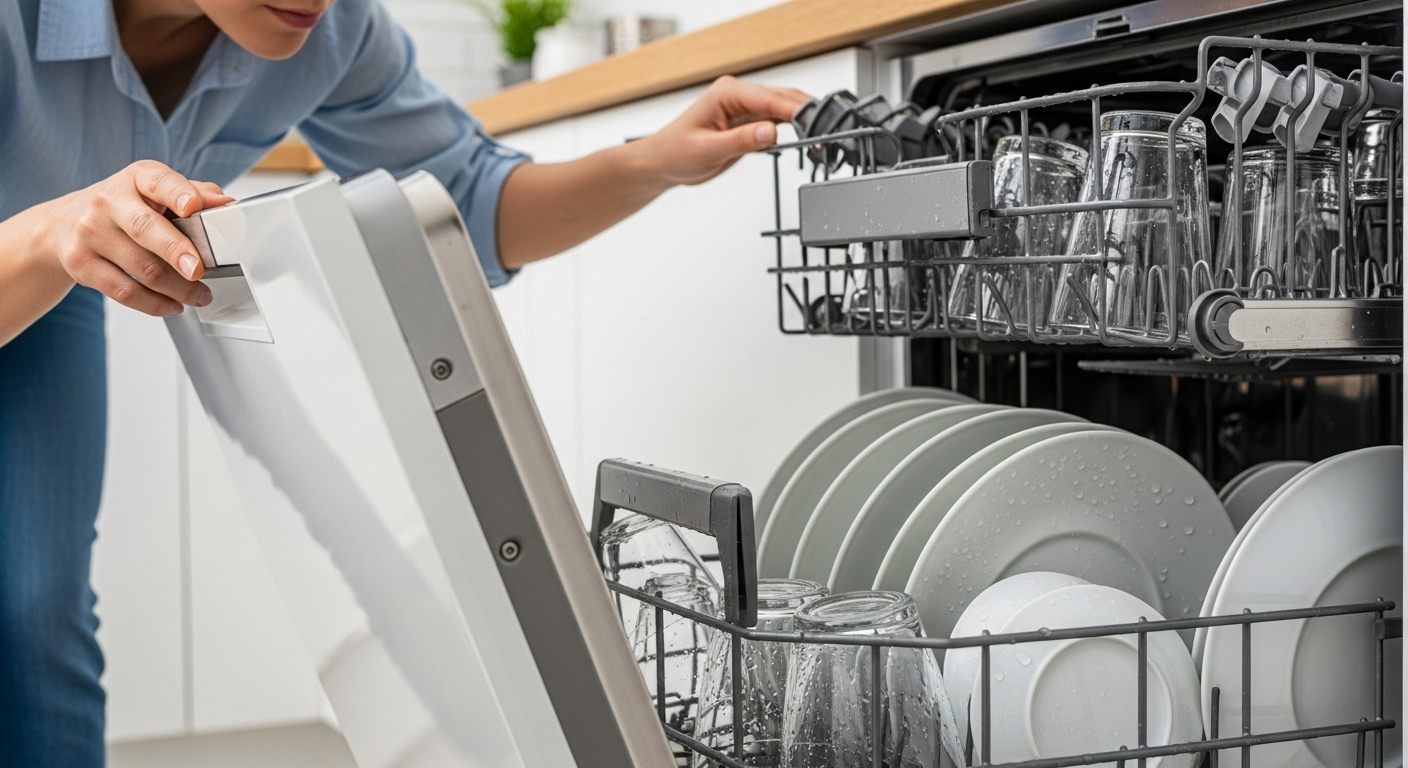Why Your Dishwasher Isn’t Drying Properly
There’s nothing more annoying than a cycle ending with soggy mugs and dripping plates. Drying issues often come down to a few common culprits: rinse aid levels, filter blockages, spray arm performance and the heating element or fan. Let’s tackle each one, so you can enjoy spot-free dishes without reaching for tea towels.
1. Low or Empty Rinse Aid
Rinse aid helps water sheet off dishes rather than puddling on them. Without it, droplets cling and leave spots—and uncomfortably soggy crockery.

2. Blocked or Dirty Filter
A clogged filter restricts water drainage, causing residual moisture to remain on dishes. Regular cleaning ensures the machine can rinse and then dry properly.

3. Spray Arm Issues
If spray arms are blocked or spinning poorly, water won’t distribute evenly—leaving pockets of heat and moisture. Check for limescale build-up and food debris.

4. Heating Element or Fan Faults
Modern dishwashers often use either a heating element or a fan to dry dishes. If your machine doesn’t feel warm at the end of the cycle, there may be an electrical fault or a failed thermostat.
Additional Practical Tips
Use a Hot Wash Cycle
Raising the wash temperature helps evaporate water faster. Look for an “intense” or “sanitise” setting.
Open the Door Slightly After the Cycle
Steam trapped inside will condense on cooler dishes. Venting helps them dry before you unload.
Load Strategically
Avoid overcrowding. Place items at an angle to allow water to drain off easily.
